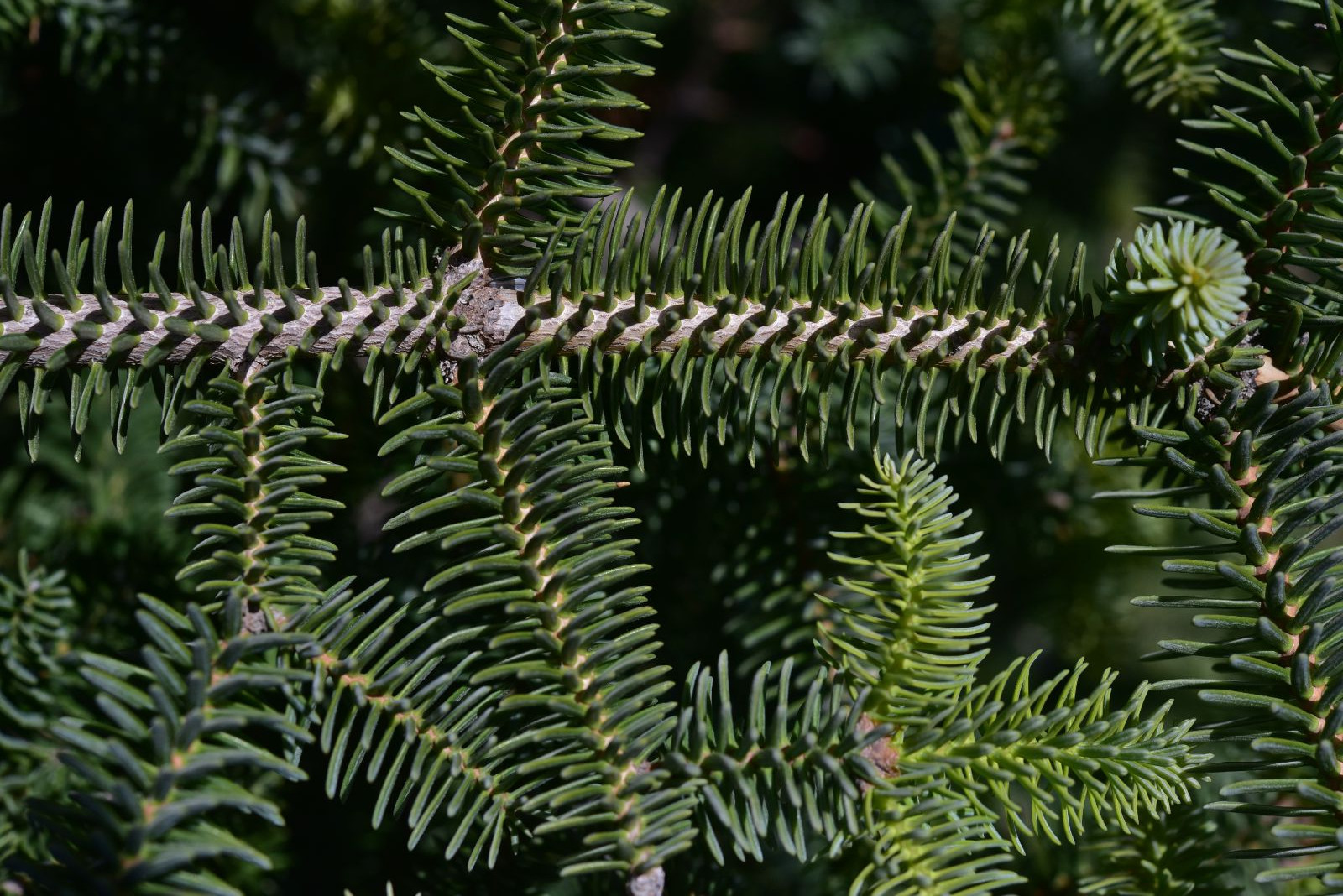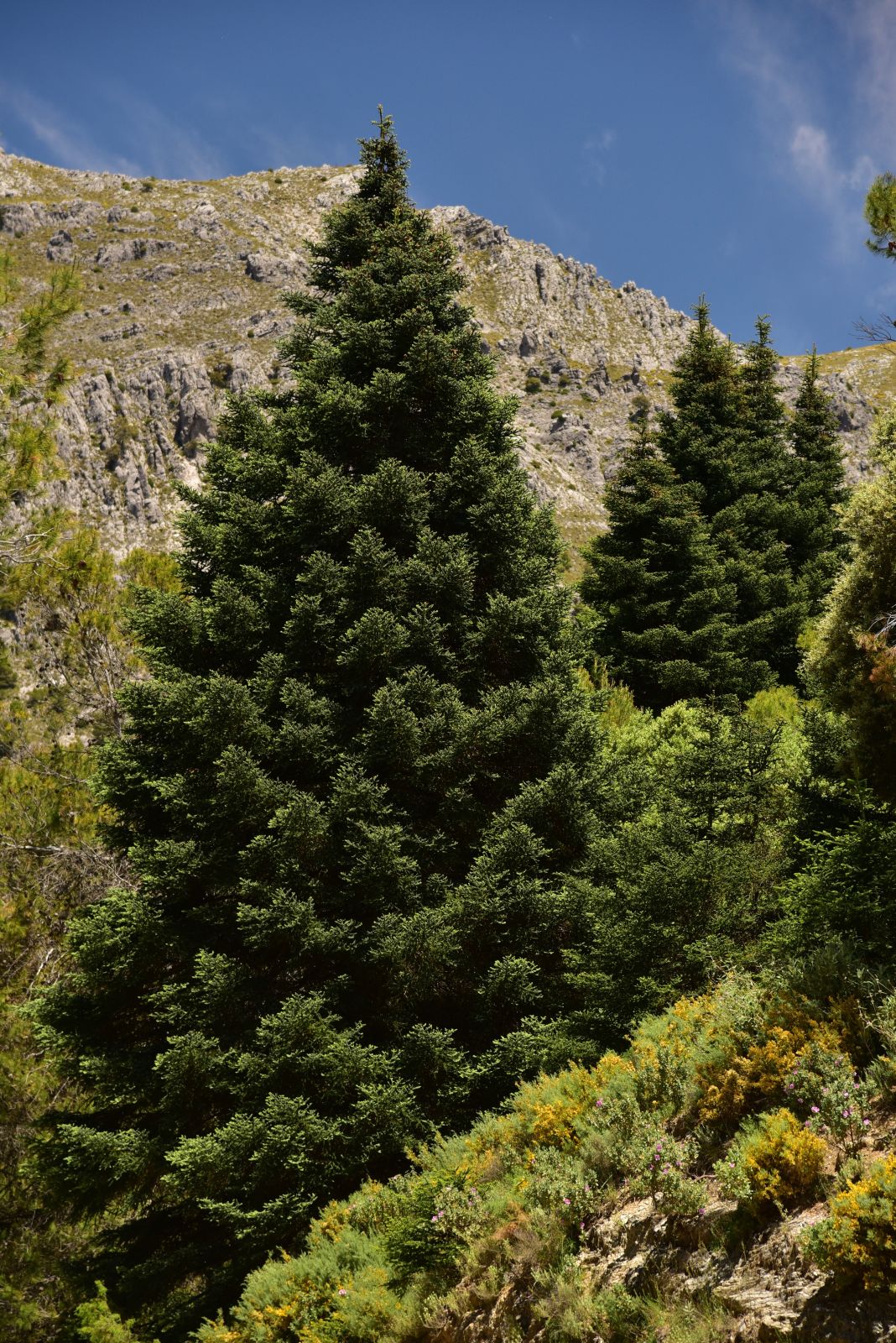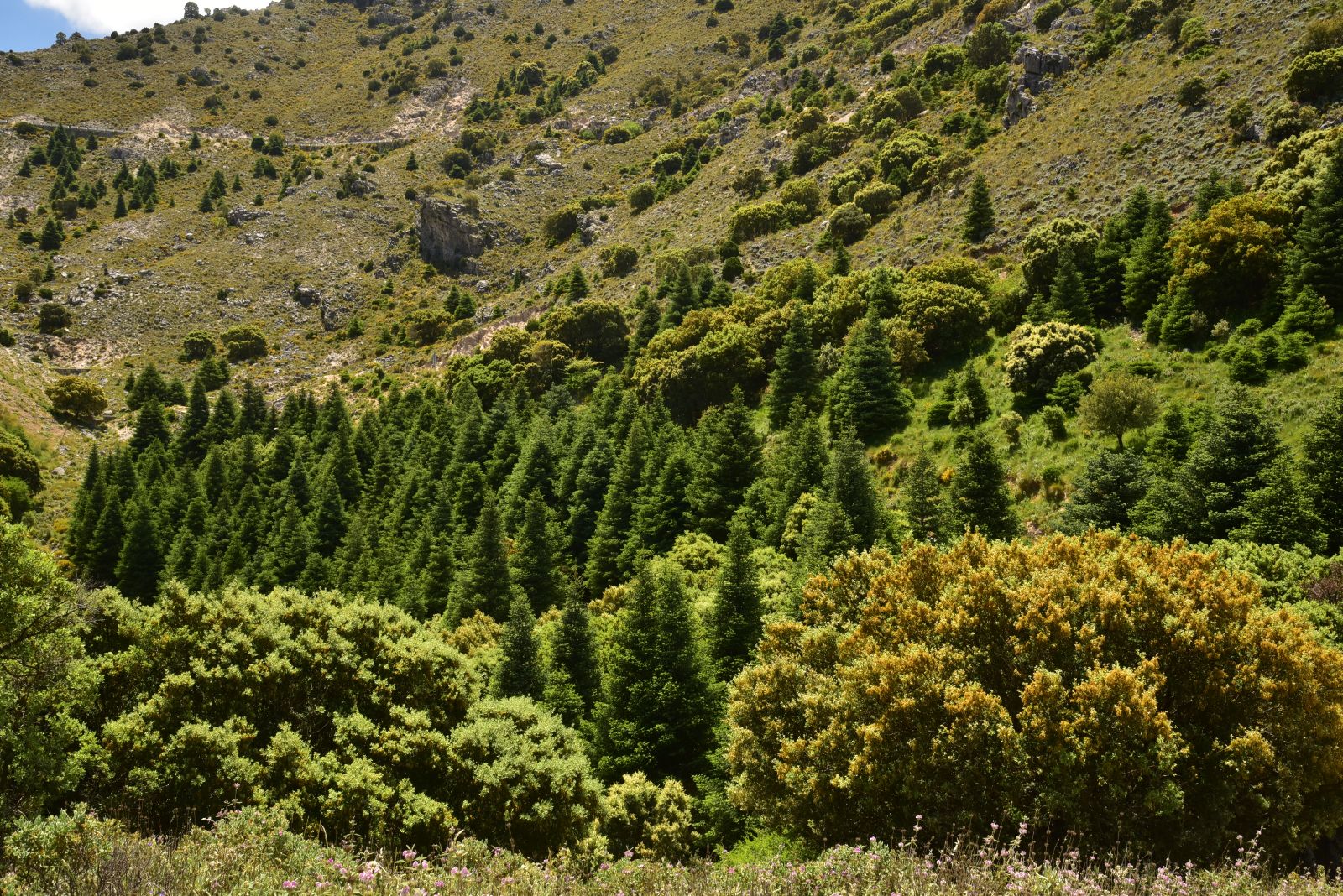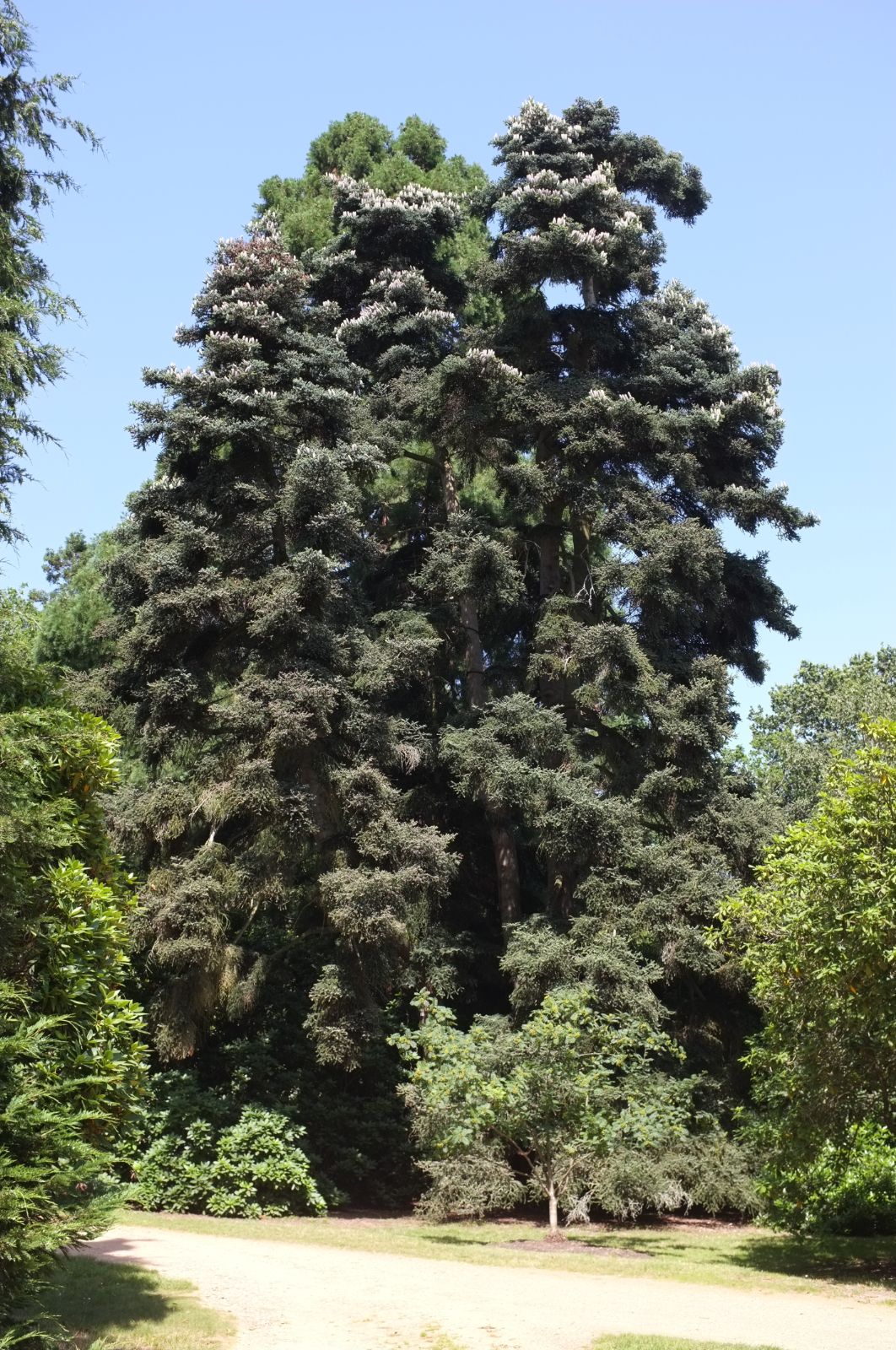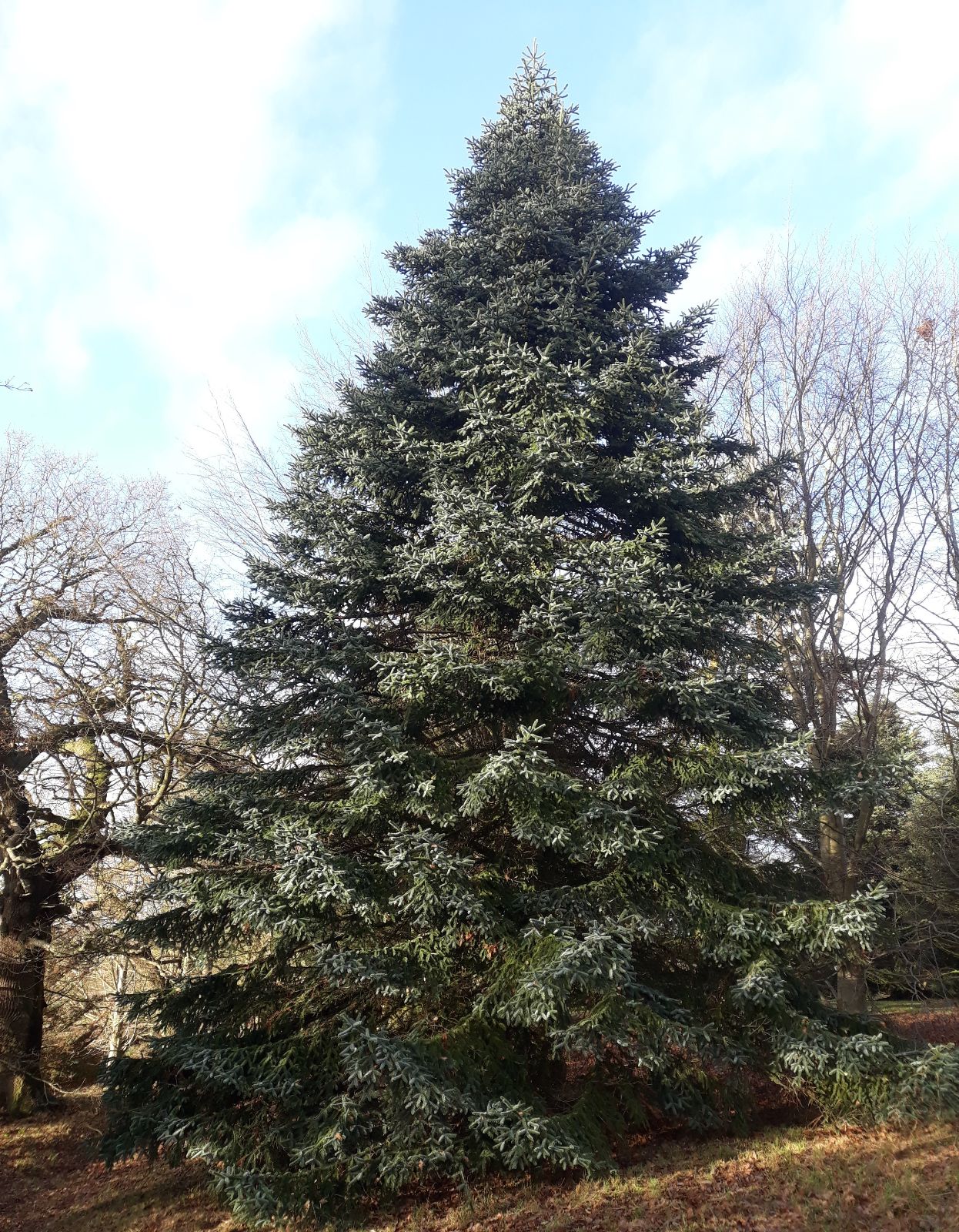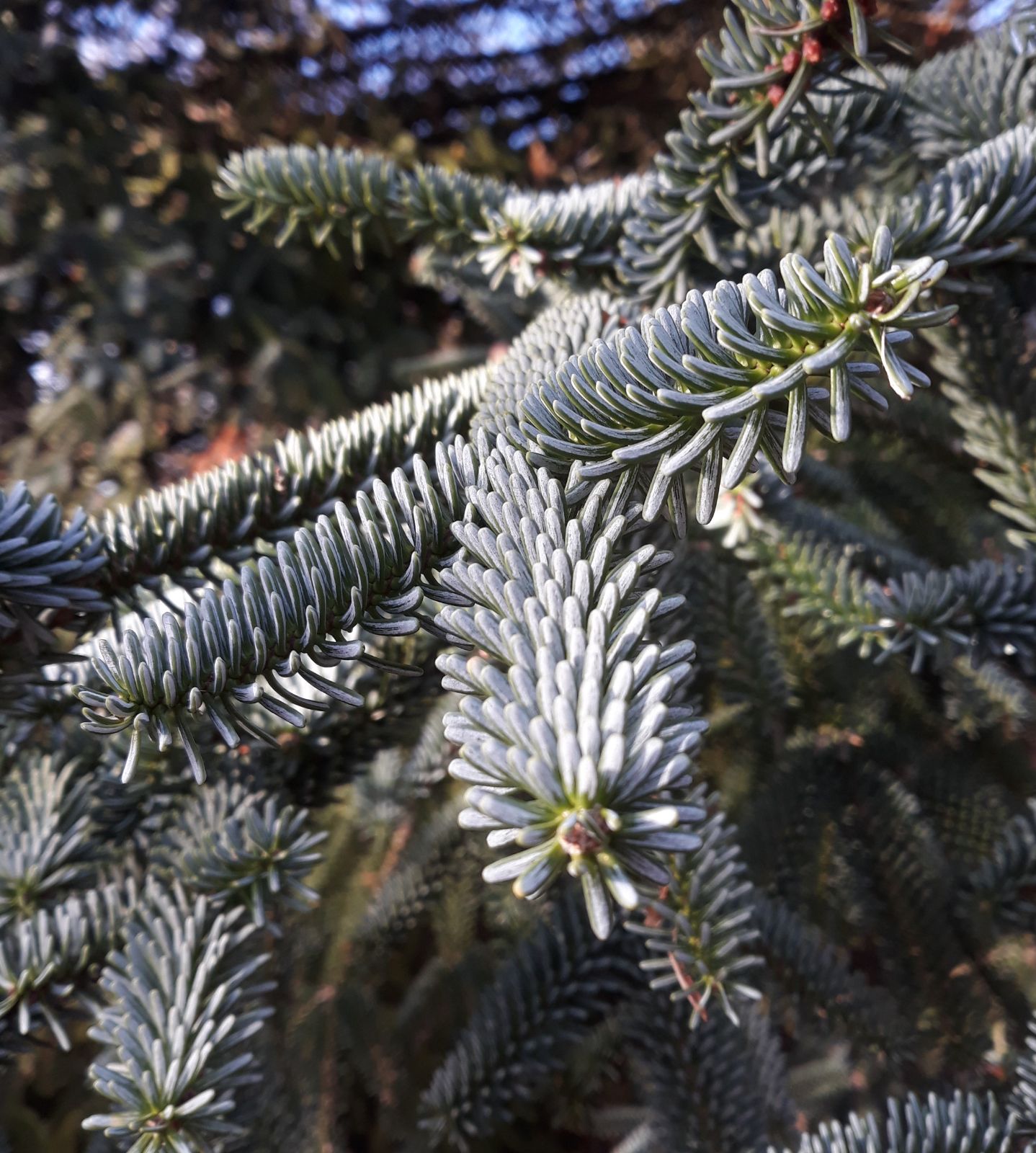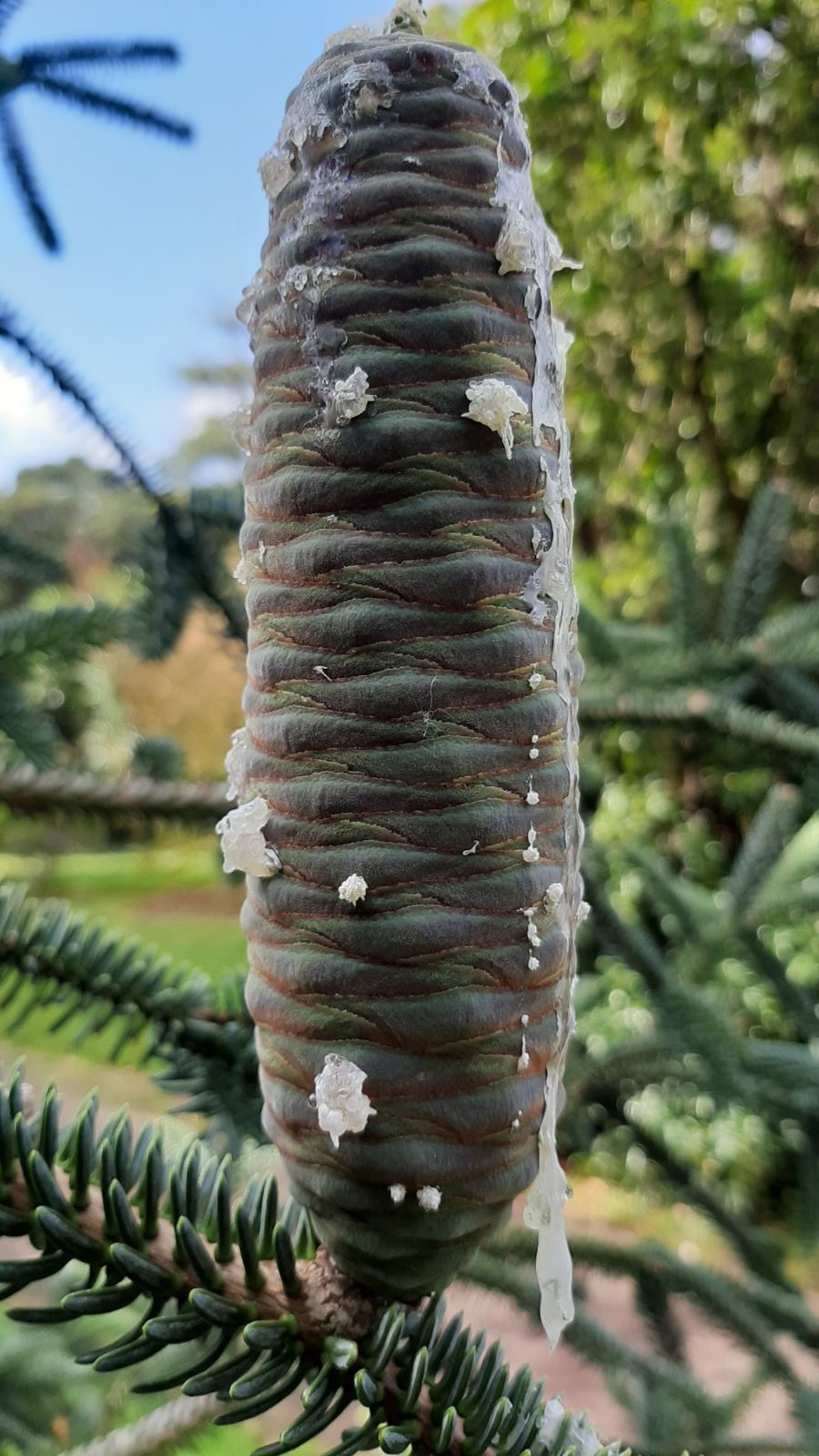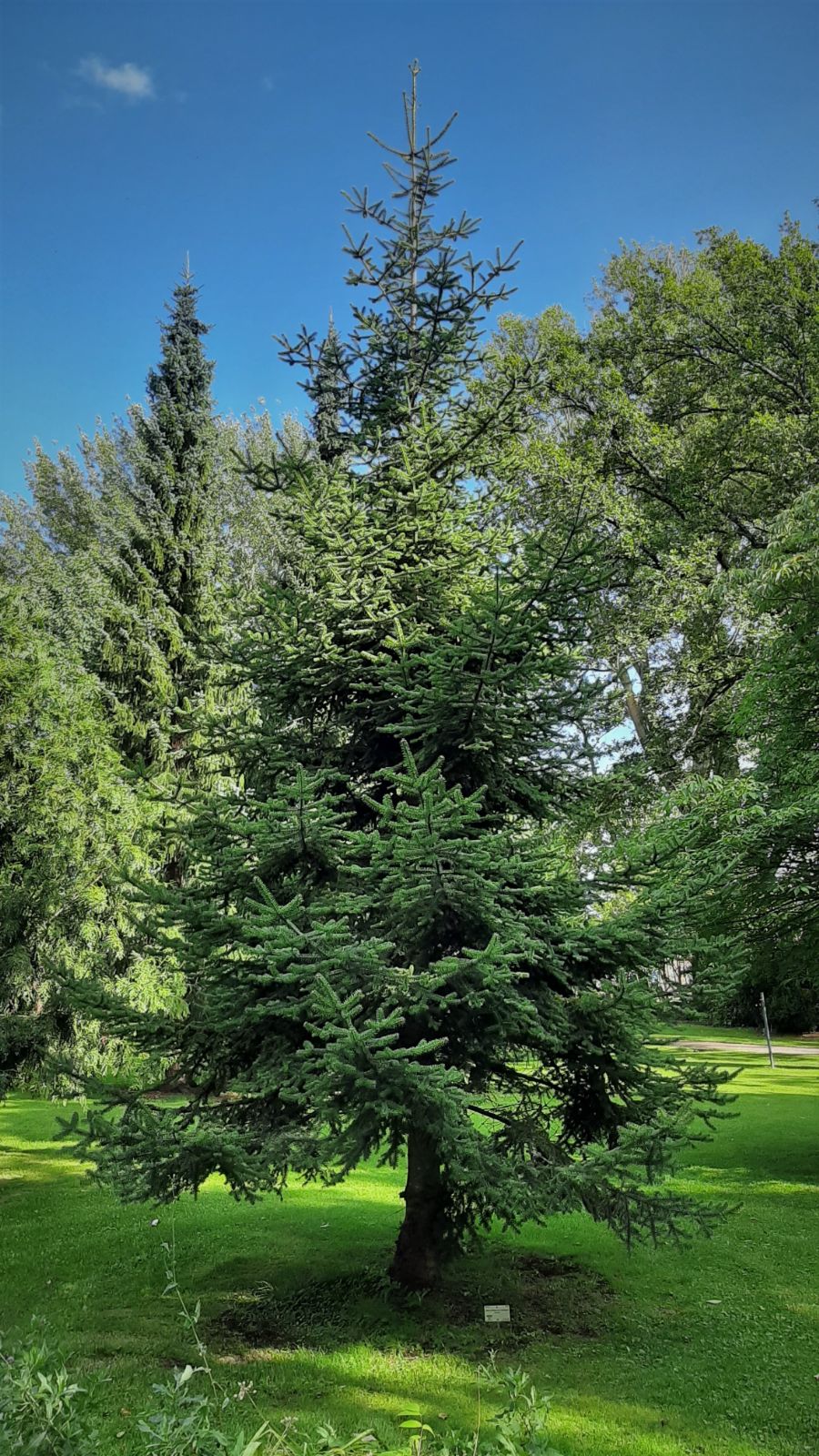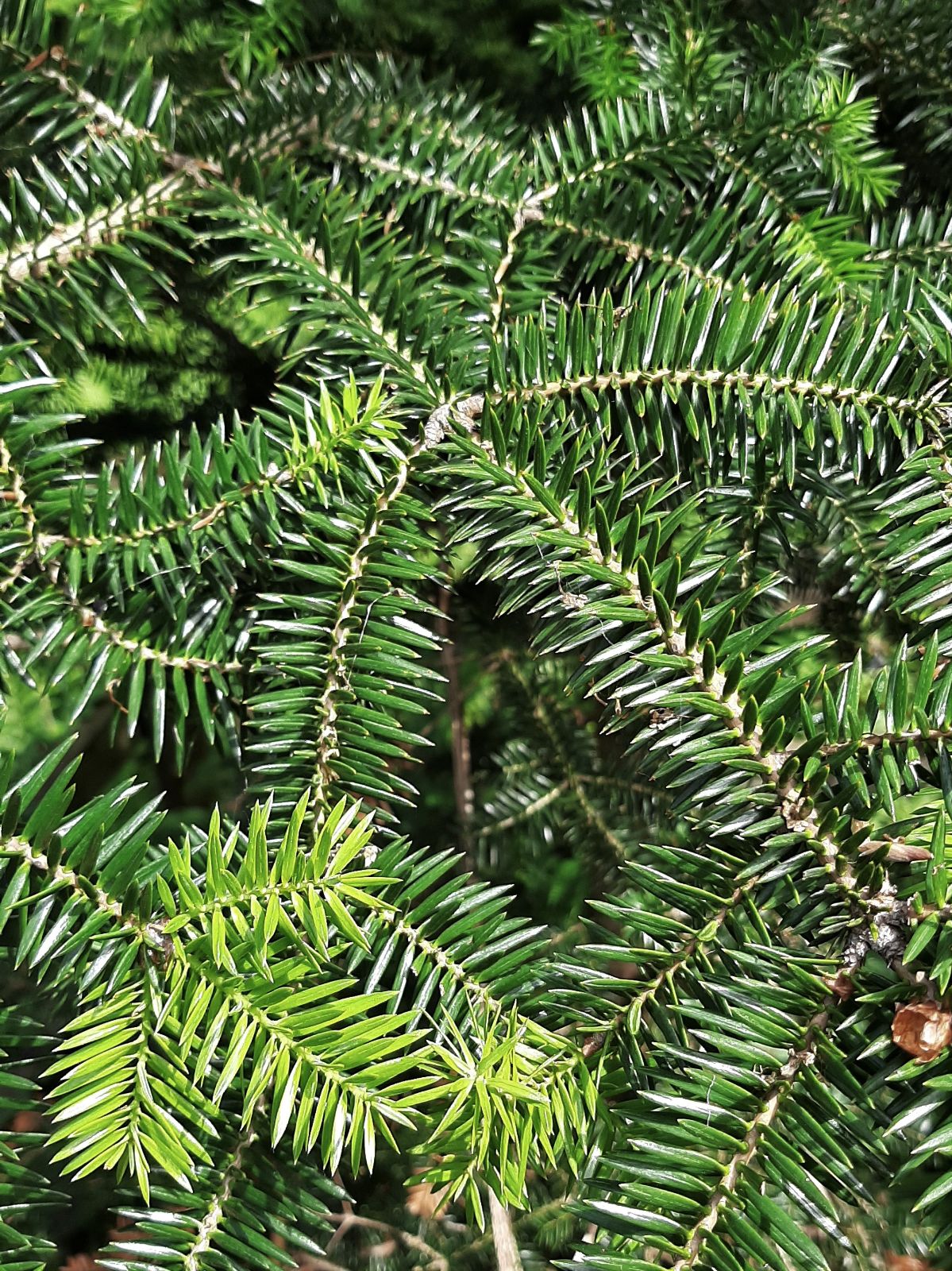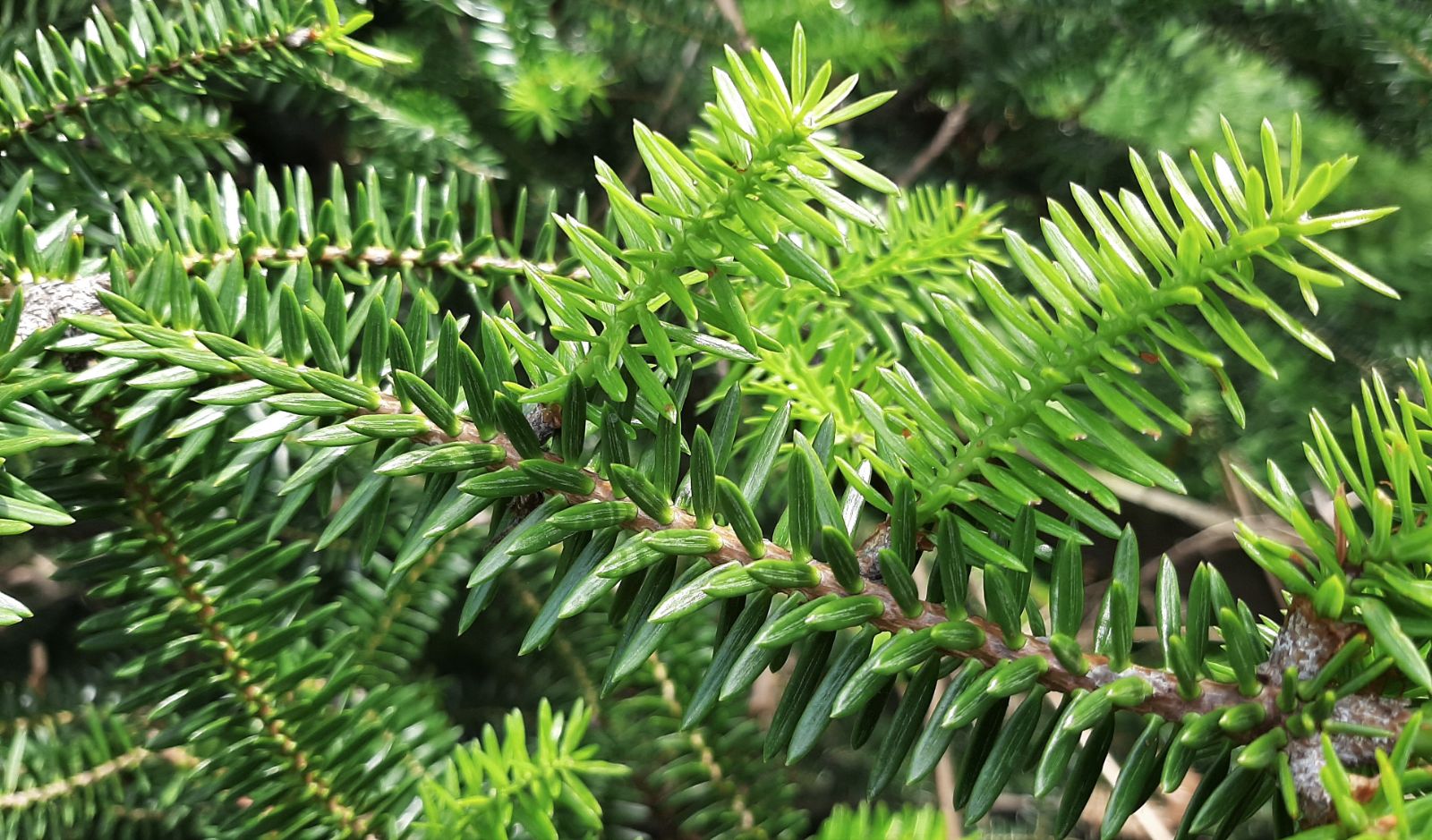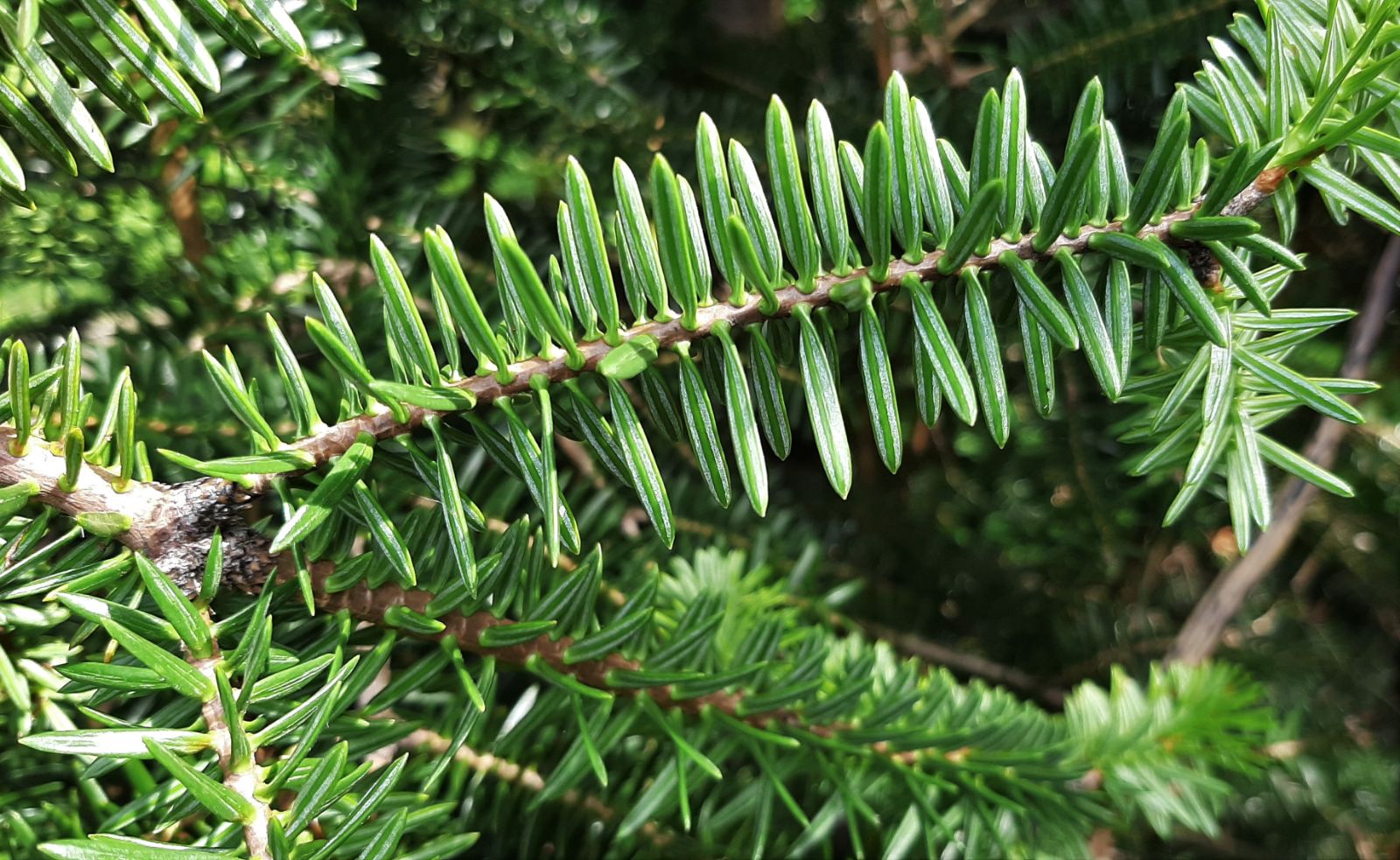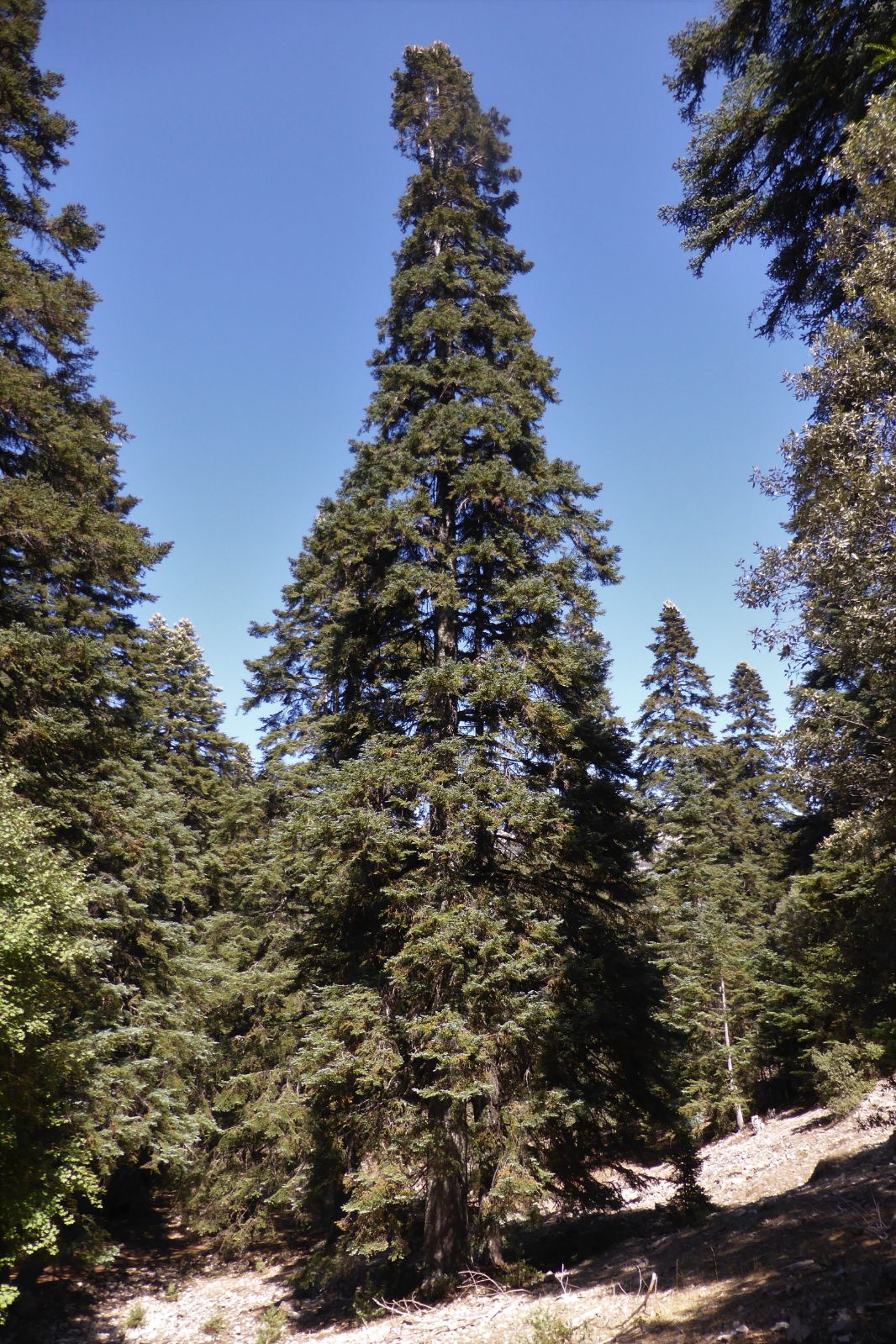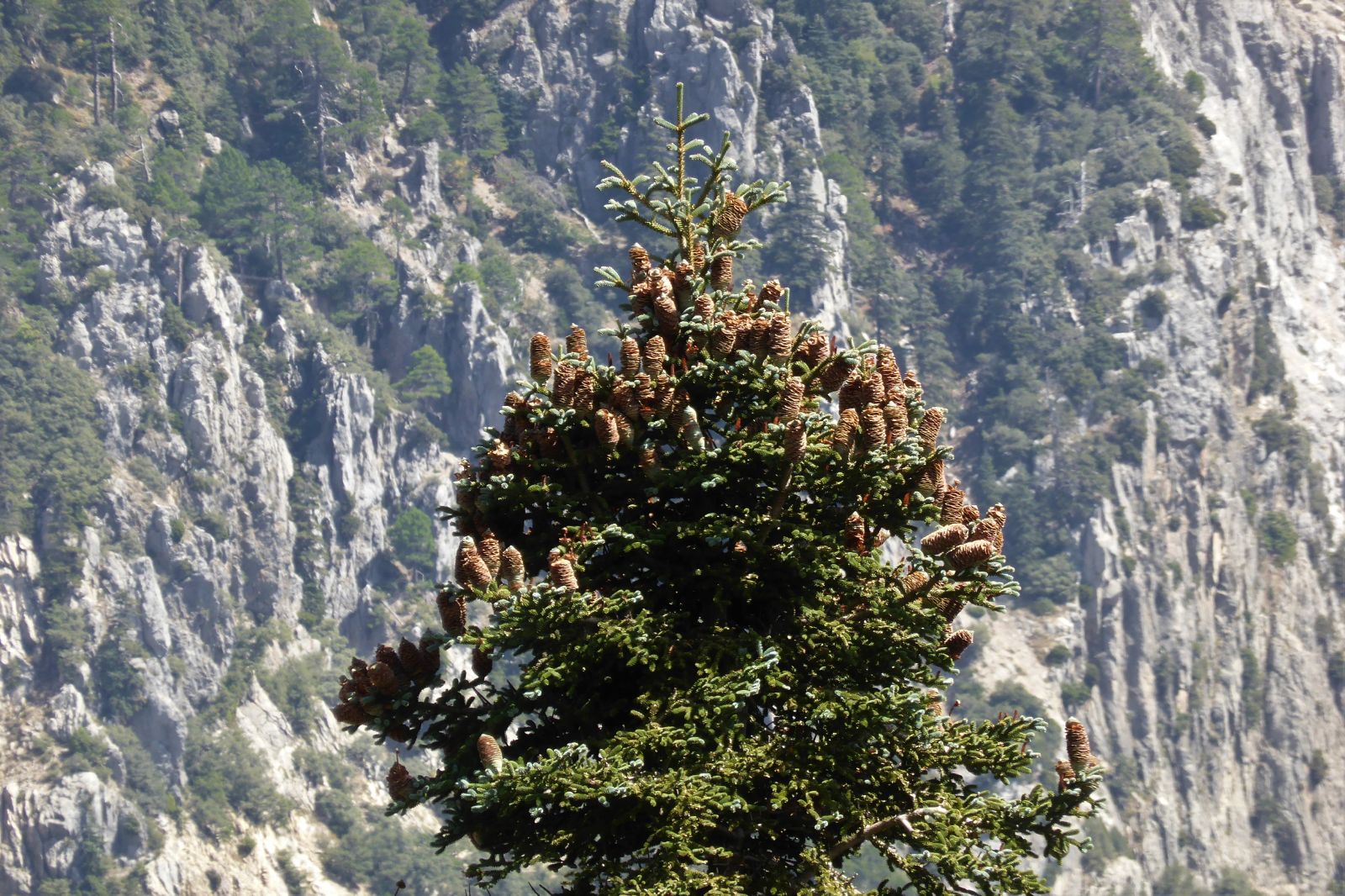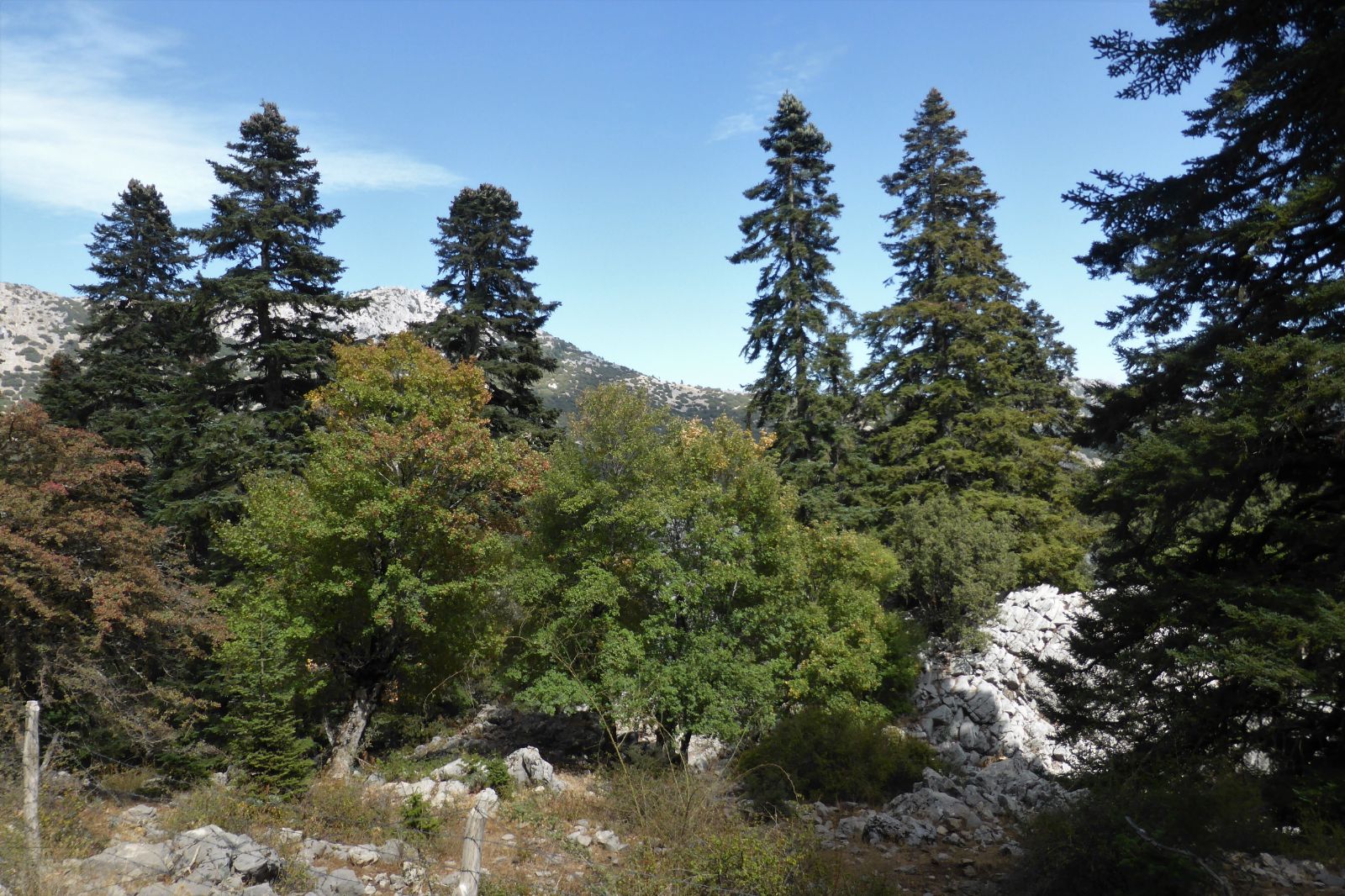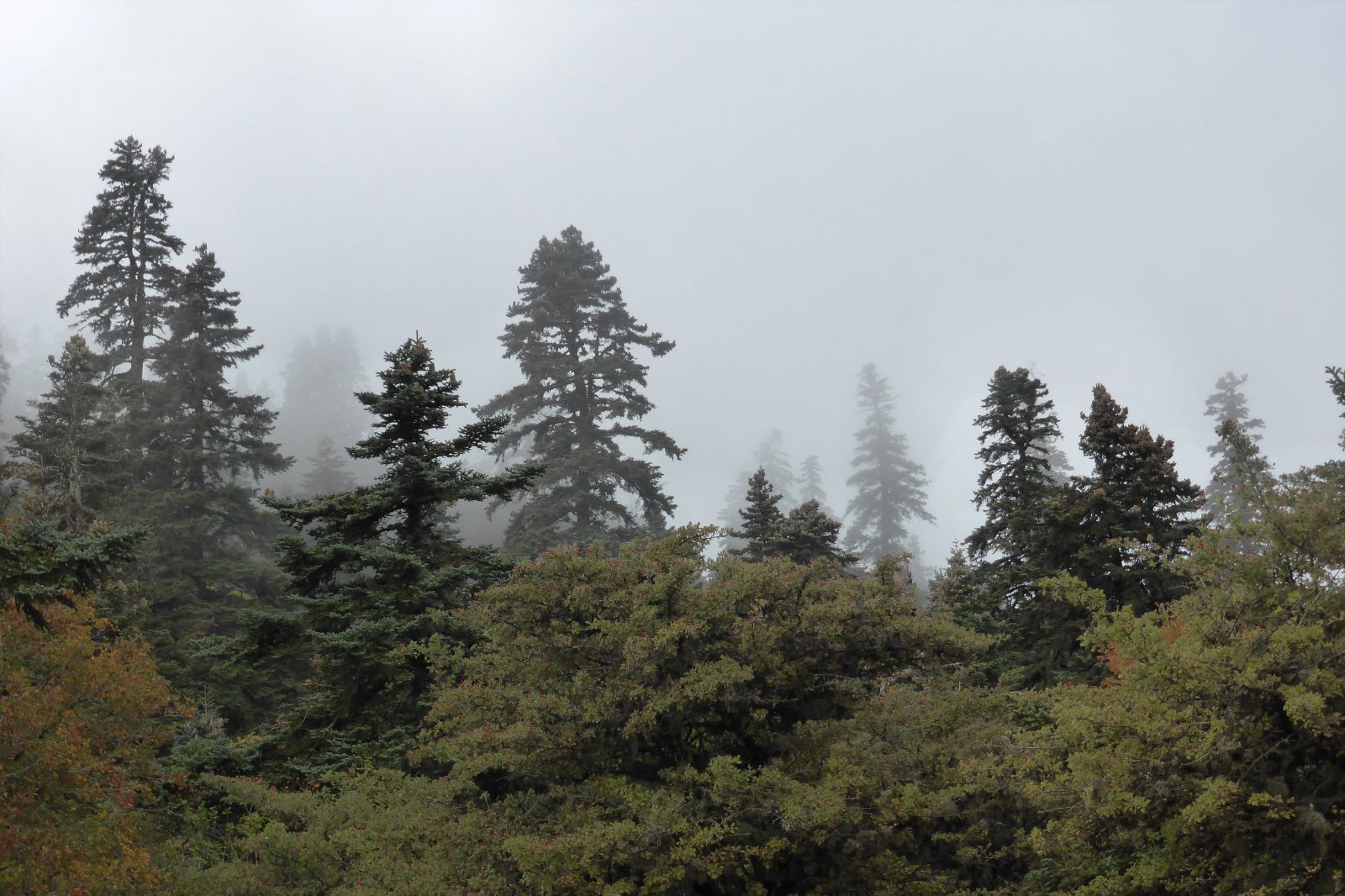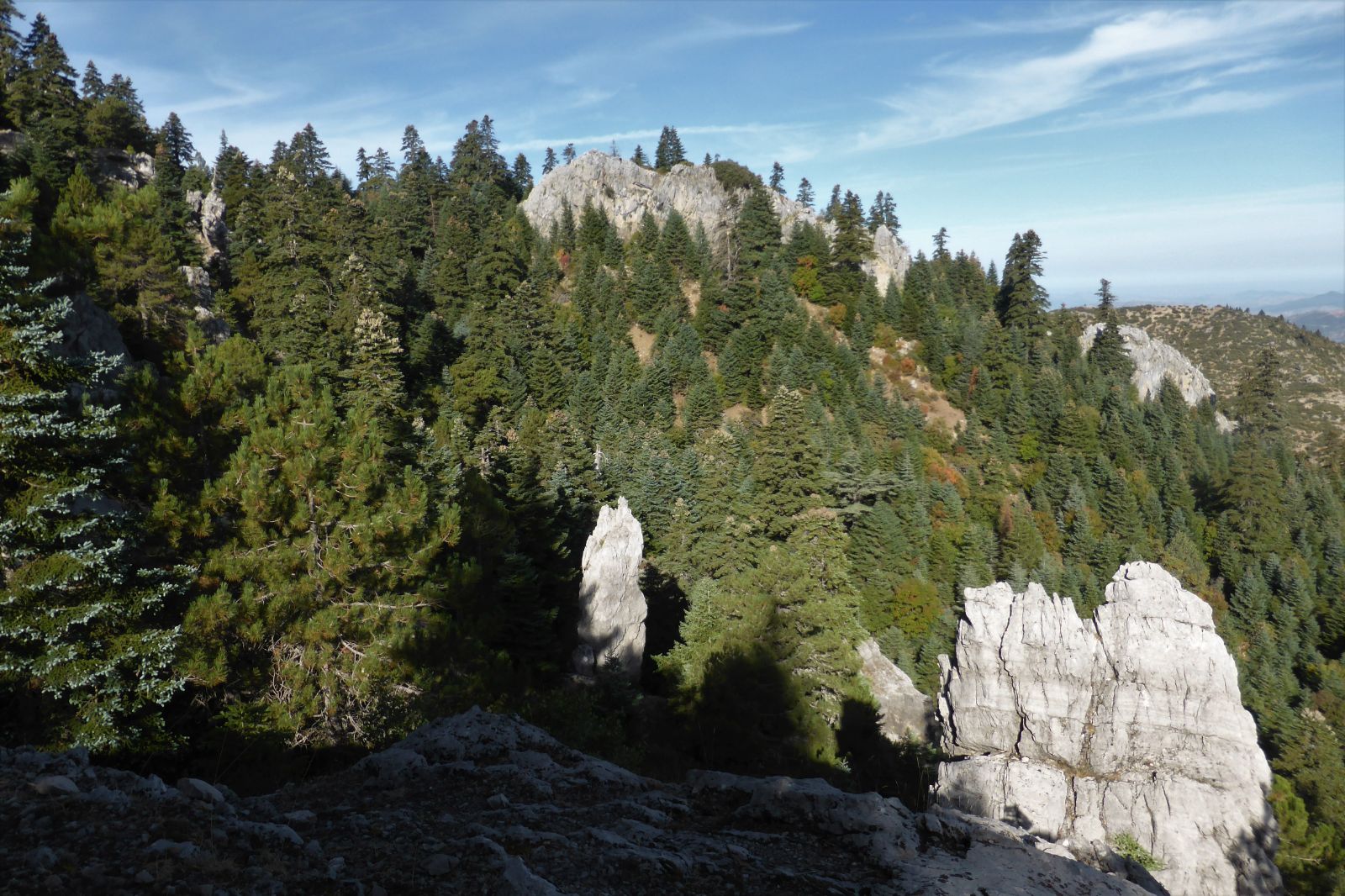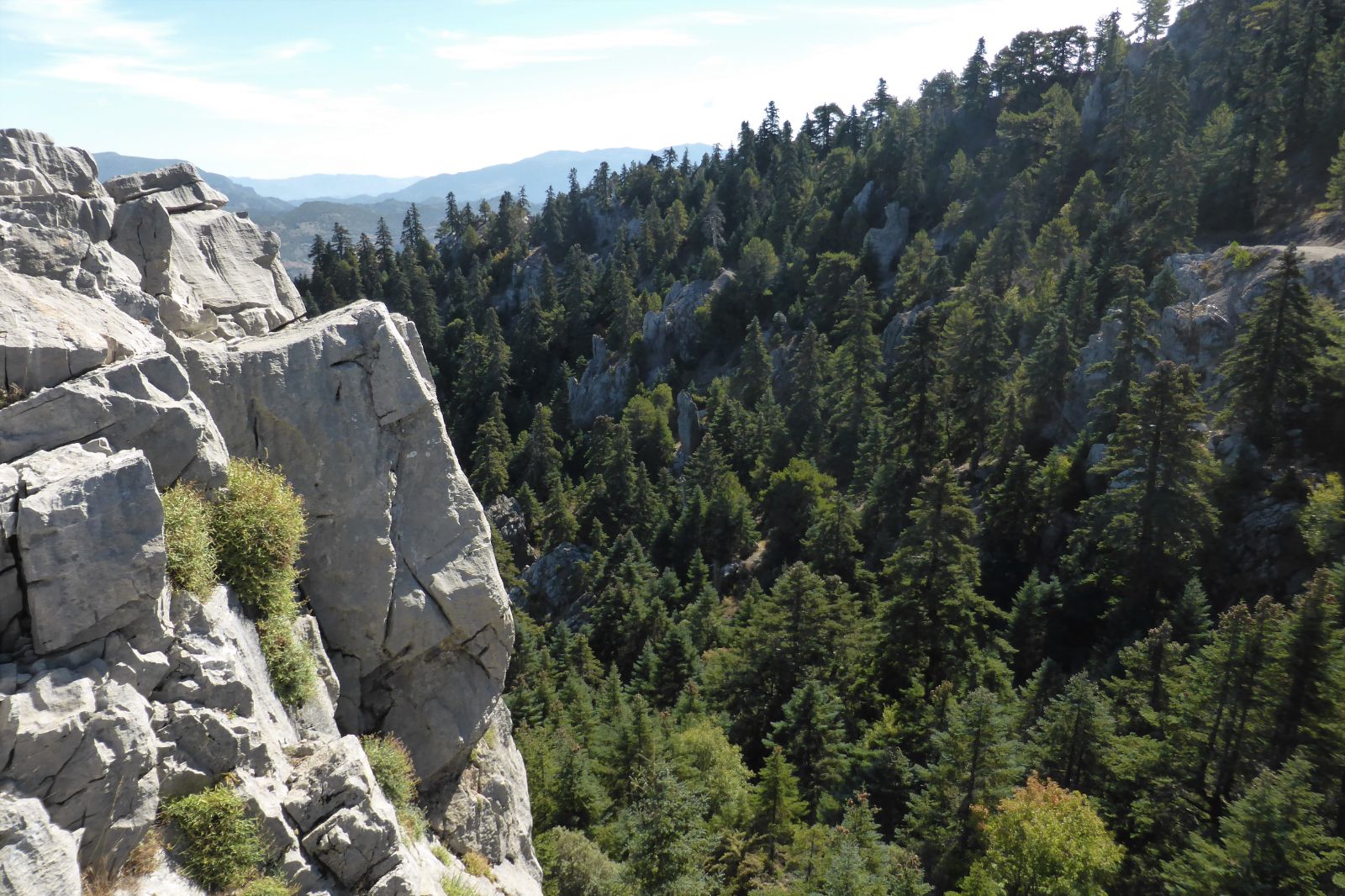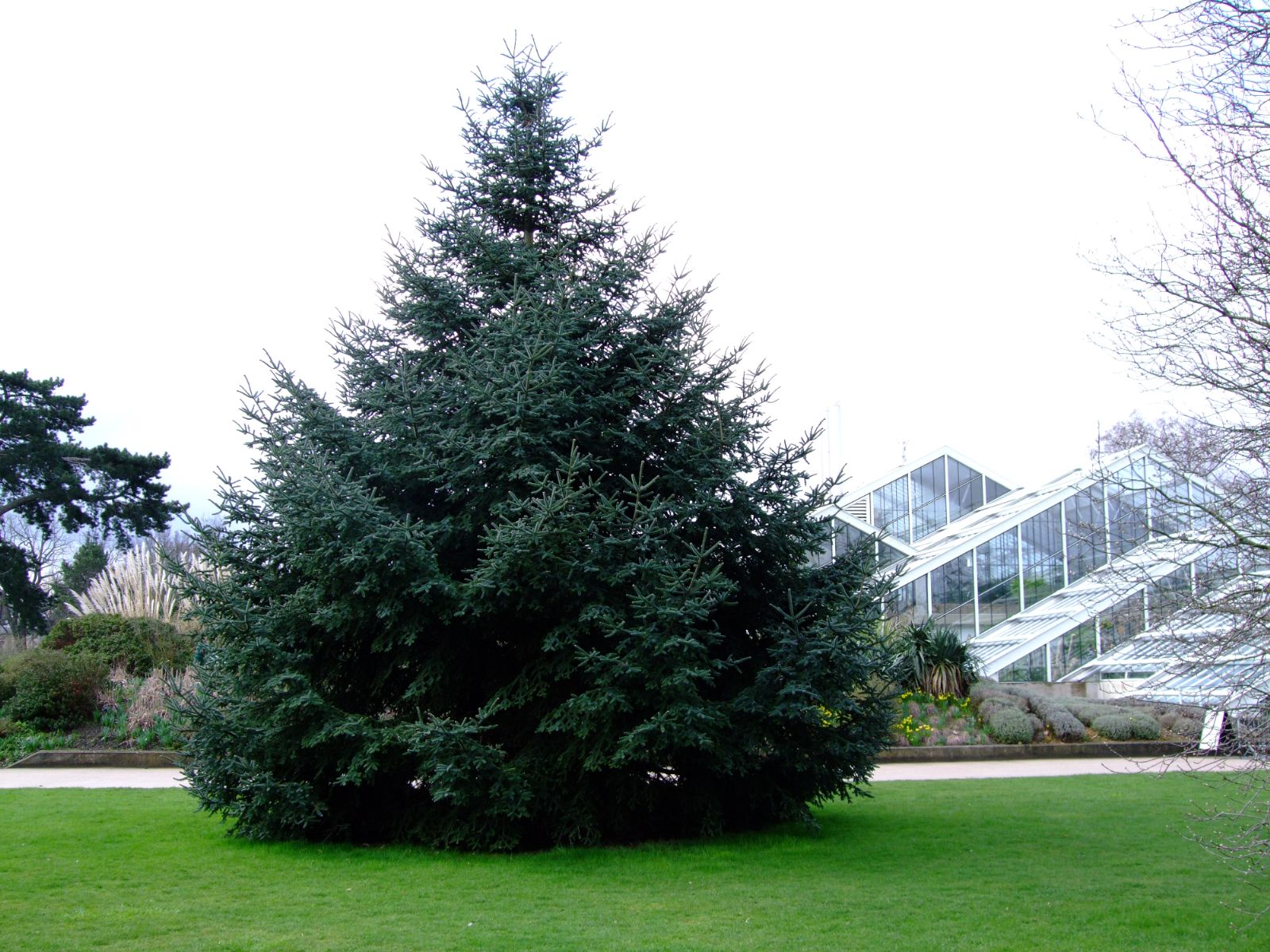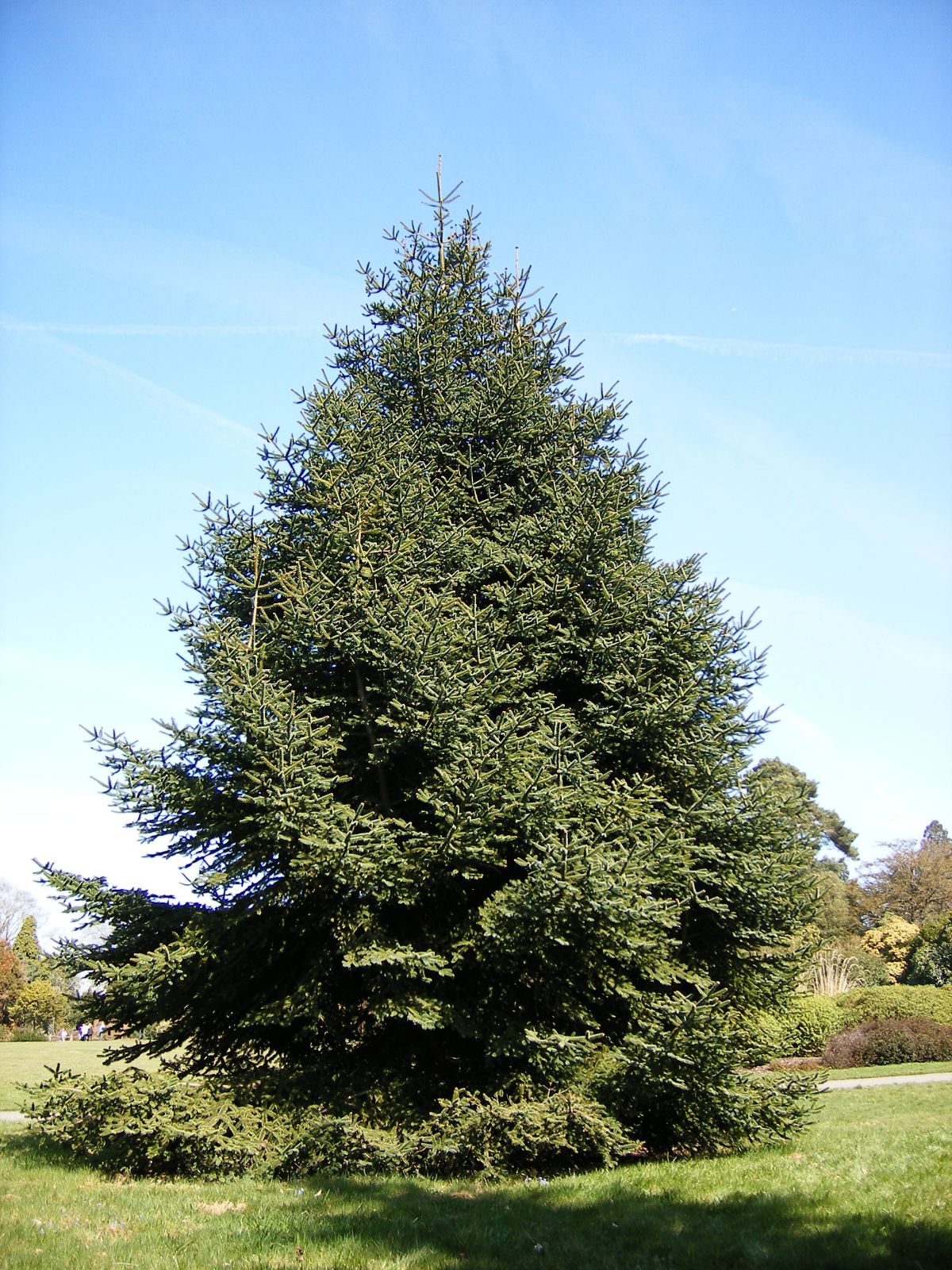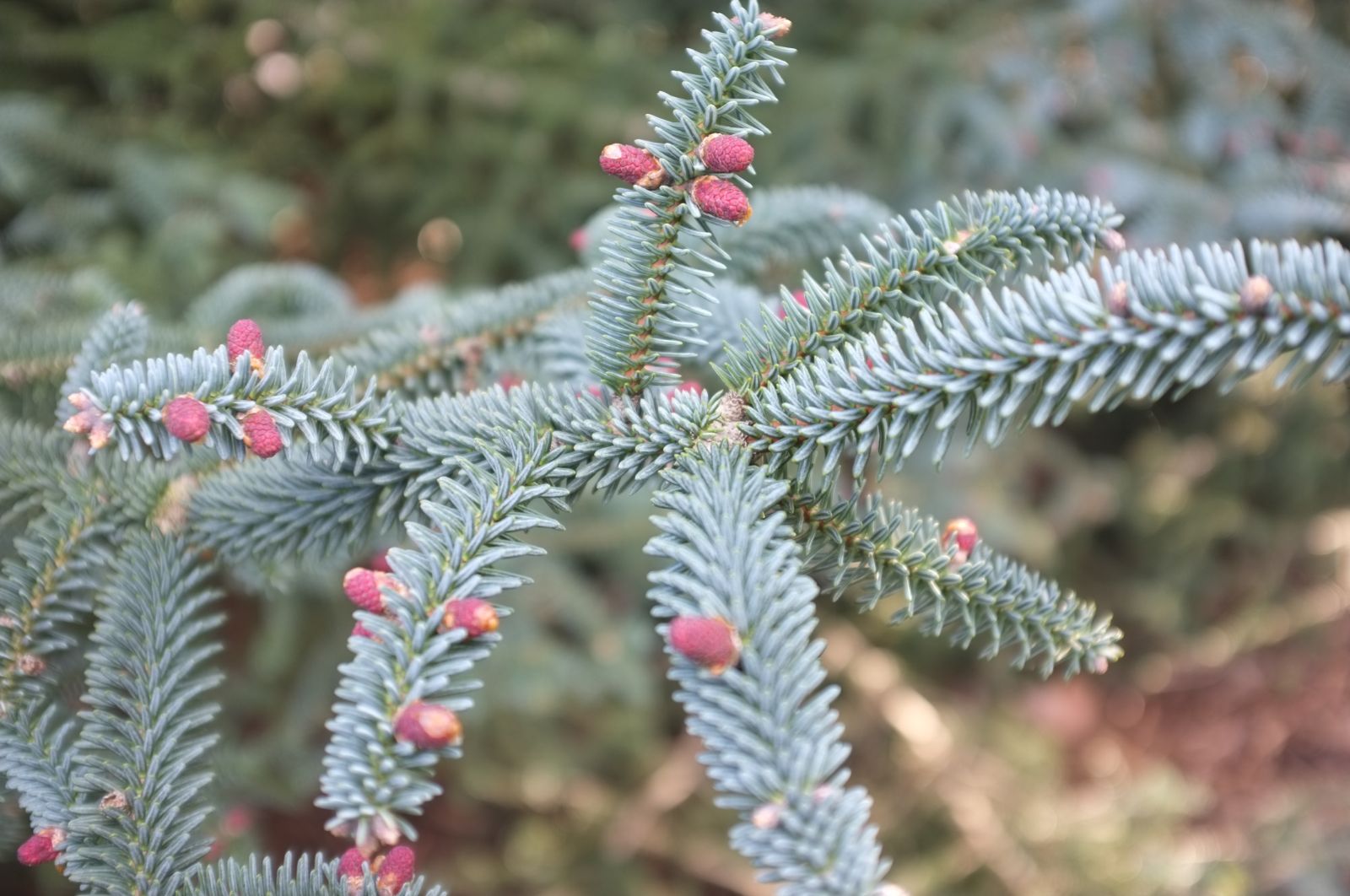Abies pinsapo
Sponsor
Kindly sponsored by
Sir Henry Angest
Credits
Tom Christian (2021)
Recommended citation
Christian, T. (2021), 'Abies pinsapo' from the website Trees and Shrubs Online (treesandshrubsonline.
Genus
Common Names
- Spanish Fir
- Sapin d'Espagne
- Spanische tanne
- Pinsapo
- Abeto de Españe
Infraspecifics
Other taxa in genus
- Abies alba
- Abies amabilis
- Abies × arnoldiana
- Abies balsamea
- Abies beshanzuensis
- Abies borisii-regis
- Abies bracteata
- Abies cephalonica
- Abies × chengii
- Abies chensiensis
- Abies cilicica
- Abies colimensis
- Abies concolor
- Abies delavayi
- Abies densa
- Abies durangensis
- Abies ernestii
- Abies fabri
- Abies fanjingshanensis
- Abies fansipanensis
- Abies fargesii
- Abies ferreana
- Abies firma
- Abies flinckii
- Abies fordei
- Abies forrestii
- Abies forrestii agg. × homolepis
- Abies fraseri
- Abies gamblei
- Abies georgei
- Abies gracilis
- Abies grandis
- Abies guatemalensis
- Abies hickelii
- Abies holophylla
- Abies homolepis
- Abies in Mexico and Mesoamerica
- Abies in the Sino-Himalaya
- Abies × insignis
- Abies kawakamii
- Abies koreana
- Abies koreana Hybrids
- Abies lasiocarpa
- Abies magnifica
- Abies mariesii
- Abies nebrodensis
- Abies nephrolepis
- Abies nordmanniana
- Abies nukiangensis
- Abies numidica
- Abies pindrow
- Abies procera
- Abies recurvata
- Abies religiosa
- Abies sachalinensis
- Abies salouenensis
- Abies sibirica
- Abies spectabilis
- Abies squamata
- Abies × umbellata
- Abies veitchii
- Abies vejarii
- Abies × vilmorinii
- Abies yuanbaoshanensis
- Abies ziyuanensis
Tree to 30 m tall, 1–1.5 m dbh. Trunks monopodial in sheltered or forest settings, but often twisted and forked in exposed trees. Crown of young trees conical, becoming irregular, open or dense in old trees. Bark of young trees smooth, dark grey, in old trees rough, scaly. First order branches long, curved downward in the lower half of old trees, second order branches spreading horizontally or ascending. Branchlets stout, greenish- or reddish-brown, maturing grey, faintly ridged, glabrous. Vegetative buds ovoid-globose, 5–6 × 4–4.5 mm, not or very resinous. Leaves densely set, radially arranged, sometimes recurved above the shoot, 0.6–1.5 cm × 2–3 mm, not or slightly twisted at base, grey-green or glaucous-green, stomata in several faint broken rows on the upper surface, in two narrow bands beneath. Pollen cones densely set, 0.5–0.7 cm long, yellow with red or red-violet microsporophylls. Seed cones cylindrical with obtuse or papilliform apex, 9–14 × 3–4 cm, greenish-purple at first, ripening to pale or dark-brown; seed scales cyanthiform or cuneate-flabellate, 2.5–2.8 × 2.2–2.5 cm at midcone; bracts fully included. (Farjon 2017; Debreczy & Rácz 2011).
Distribution Spain Málaga and Cadiz Provinces
Habitat North-facing slopes in mountains, 900–1800 m asl, on well-drained rocky soils derived from dolomitic limestone. The climate is montane-Mediterranean with warm dry summers and mild, moist winters. Only rarely in small, pure stands; most often associating with Pinus pinaster, Quercus coccifera, Q. ilex, Pistacia lentiscus and Berberis hispanica.
USDA Hardiness Zone 6-8
RHS Hardiness Rating H6
Conservation status Endangered (EN)
Taxonomic note Abies pinsapo comprises Spanish Fir (subsp. pinsapo) and Moroccan Fir (subsp. marocana); their morphological distinctions are, perhaps, a result of their long isolation from one another in mountains on opposite sides of the Strait of Gibraltar in the western Mediterranean. Validly published combinations are available recognising the two as varieties and subspecies of A. pinsapo. A third entity sometimes seen in literature, Mt Tazaot Fir (A. pinsapo var. tazaotana) is said to occur with Moroccan Fir in the Rif Mountains; here it is reduced to synonymy with Moroccan Fir following the recent works of Farjon (2017) and Debreczy & Rácz (2011). When Mt Tazaot Fir is recognised the rank of variety is the most appropriate means of treating the various constituents of this species, but in ‘dropping’ Mt Tazaot Fir, the rank of subspecies becomes the more appropriate. They are duly treated here as subsp. pinsapo (Spanish Fir) and subsp. marocana (Trab.) Emb. & Maire (Moroccan Fir).
Spanish Fir is a curious subject in gardens. It is unusual in the genus for having short, stiff needles arranged radially all around the shoot, hence its other English moniker, Hedgehog Fir. It is well known for being one of few firs that is quite at home on alkaline soils, including heavy chalk, and in hot, dry sites (the others are the Algerian, Greek, and Moroccan Firs), but provided the drainage is good it isn’t terribly fussy. It is hardy, moderately tolerant of air pollution, and when growing well it is a very attractive tree (Mitchell 1996).
Such a suite of attributes might cause a keen observer to pause and ask why, then, is it not more commonly seen? The answer is that Spanish Fir is a tree that might best be characterised as ‘high risk, high reward’. It is endemic to a narrow area of southern Spain where it grows in three separate locations – the Sierras de Grazalema, de las Nieves, and Bermeja. In each case it is largely restricted to north-facing slopes at altitude, where it can escape the strongest sunshine, the highest temperatures, and where it has adequate access to soil moisture (Arista, Knees & Gardner 2019). In cultivation in central and northern Europe, however, it must be sited on well-drained soils, preferably in a sunny position of southern aspect, and, if it is to really excel, in areas with meaningful summer heat. Its extraordinary hardiness and luxuriant growth of youth can be compromised by sudden changes in soil hydrology, and even in ideal situations it is rare for trees to grow for very long before developing at least one, but often multiple additional leaders.
Intolerant of shade, the lower branches soon die off if other trees are grown too close, and even in the absence of shade trees are prone to carry a significant weight of dead wood because the crowns are so dense to begin with. Coupled with a dramatic slowdown in growth, their crowns soon become irregular with uneven weight distribution, rendering them vulnerable to storms and snow damage which diminishes their aesthetic further. Alan Mitchell put it in more bluntly, rightly saying they can become ‘monstrously misshapen’, adding that after their first few relatively vigorous decades ‘the growth of big trunks can become so slow that in any other tree it would be fatal’ (Mitchell 1996).
Nevertheless, Spanish Fir is endowed with an elusive beauty. It is one of those trees that has become just rare enough in collections to make discovering one in an unlikely location an exciting event. When it is within their power the discoverer is mysteriously motivated to plant a few more, so that in another century or so somebody else may experience the same surprise, the same excitement, and succumb to the same spell, ensuring the cycle continues. There are several limiting factors, though: to ensure one good survivor a century hence several should be planted. Spanish Fir’s high mortality rate may be one reason it has decreased in popularity; limited availability is likely another, and the two in combination become a self-fulfilling prophecy. It is more commonly available as one of its named cultivars than as the type. Like many firs, but most especially those of the Mediterranean basin, it hybridises freely with closely related species, and seed of cultivated origin is unlikely to come true. Several hybrids of A. pinsapo have been named, including A. × insignis and A. × vilmorinii.
Discovered by the Swiss botanist Edmond Boissier in 1837 and introduced by him in the same year when he sent seed to Vilmorin; an original tree grew at Verrières near Paris well into the 20th century. Further collections followed in 1839 when Captain Widdrington sent seed to England (Elwes & Henry 1906–1913). It was probably introduced to various other European countries at about the same time, or soon after, and it has remained available more or less continuously. It was in North America by 1850, where it would be found to grow well in north-eastern and Pacific Coast states (Jacobson 1996). Indeed, Spanish Fir is a somewhat more reliable subject in a continental climate than in a maritime one, making healthier, sturdier trees so long as absolute minimum temperatures are not too extreme. It is also one of few firs at its best when there is some lime in the soil. Some of the best specimens on record are in European arboreta, but there are records of it comfortably exceeding 30 m in multiple UK collections, even in the Highlands of Scotland, as well as in France, Italy, and Spain (Tree Register 2020; monumentaltrees.com). It is not so large-growing in North America: Michael Dirr suggests 12 m ‘at landscape maturity’ (Dirr 2011).
The specific epithet, pinsapo, is said to be a derivative of pinus saponis – ‘the conifer of soap’. Historically the branchlets were crushed to produce a soap-like substance (Elwes & Henry 1906–1913). It is fortunate that modern alternatives are available, for Spanish Fir is now categorised as Endangered, having suffered dramatic losses in recent decades due to fire. These relatively recent losses are now being exacerbated by increasing incidences of pests and diseases and the effects of climate change, which are seeing the native habitat experience higher temperatures and decreasing precipitation (Arista, Knees & Gardner 2019).
'Aurea'
An old selection raised by Sénéclauze c. 1867, ‘Aurea’ is a slow-growing plant with young leaves yellow, gradually turning green over 2–3 years. In hot, sunny climates, this selection benefits from some shade to prevent scorching, whereas in cooler climates, the yellow coloration can be biased toward the sunny side of the plant (Auders & Spicer 2012). It can be shaped to form an attractive specimen for a rock garden.
Dwarf Cultivars
Several dwarf selections of both Spanish and Moroccan Firs exist, but the only one that is genuinely widespread is ‘Horstmann’, which is discussed separately. The rest are the domain of specialist growers, and several of the extreme dwarfs listed below, propagated from witches’ brooms, are virtually impossible to distinguish from one another:
- ‘Atlas’ An extreme dwarf with very short needles selected from a witches’ broom on a plant of subsp. marocana
- ‘Clarke’ Eventually a small, compact pyramidal tree with short glaucous leaves, to 1.5 m tall after ten years. Raised in California in 1935
- ‘Fatima’ Extreme dwarf of Spanish Fir, selected from a cultivated tree in Czechia in the early 2000s
- ‘Hammondii’ An old cultivar of irregular habit, wider than tall in youth, introduced by the Veitch nurseries before 1881
- ‘Marokko’ Selected from a witches’ broom of subsp. marocana, but with full-sized leaves and ultimately larger than ‘Atlas’
- ‘Montejaque’ An extreme dwarf of subsp. pinsapo selected from a wild witches’ broom in 2004
- ‘Pygmaea’ A slow-growing globose dwarf selected by Sénéclauze in 1868, to 50 × 50 cm in ten years
- ‘Quicksilver’ An extreme dwarf raised in the UK during the 1980s, with very silvery-green leaves
- ‘Ronda Mt’ An extreme dwarf of subsp. pinsapo only 20 × 30 cm in ten years, selected from a wild witches’ broom found near Ronda in Spain
- ‘San Fernando’ (‘San Pedro’) An extreme dwarf with grey-green needles
- ‘Soltau’ Compact, conical plant of very dense growth, raised in Oregon in the early 2000s. To 2 m in ten years
- ‘Turek’ An extreme dwarf only 20 × 30 cm in ten years with grey-green needles
(Auders & Spicer 2012; Hatch 2021–2022).
'Fastigiata'
As its name suggests, ‘Fastigiata’ is a strongly upright form of relatively fast-growth, with short, sharply ascending branches. The needles are reportedly at the grey-green end of the spectrum as opposed to glaucescent, but it is now rarely seen (Auders & Spicer 2012).
'Glauca'
In natural populations of both subspecies certain trees are more vividly glaucous than others; they are rendered so by a much broader stomatal band on the upper leaf surface than is typical. The cultivar name ‘Glauca’ was first used to describe such a tree raised at the Desfossé & Thuillier nursery in France, sometime before 1867. The original clone is described as a small, slow-growing tree with shorter than average leaves (Auders & Spicer 2012) but as with so many named selections that represent natural variation, its use has become blurred over the years.
'Horstmann'
Synonyms / alternative names
Abies pinsapo 'Horstmann's Nana'
A dwarf selection of moderately upright habit and ‘exceptional winter hardiness’, reaching c. 1 × 0.6 m in ten years (Auders & Spicer 2012). It was raised in West Germany in 1978 by Günther Horstmann, who made many important selections of conifers to improve the range of extremely cold-hardy forms available to horticulture, for example the Cedrus deodara Paktia Group. There are several other dwarf cultivars of both Spanish and Moroccan Fir, but ‘Horstmann’ is probably the most frequently encountered; many of the others remain the unchallenged dominion of specialist collectors. These are listed under ‘Dwarf Cultivars’.
'Kelleris'
Probably the most frequently encountered cultivar, ‘Kelleris’ is best thought of as a particularly robust form of the species. It can be somewhat irregular in youth due to its notable vigour and (relatively) sparse branching. Its vigour can put pressure on the graft union for the first few years as this races to heal quickly enough to support accelerating top growth, which can achieve 4 m in ten years. The foliage is at the larger end of the given size range, and is striking silvery-blue due to the thick waxy coating on the leaves. This latter feature also renders ‘Kelleris’ somewhat more frost-hardy than typical seed-raised plants, at least in youth. It was raised at the Poulsen Nursery in Denmark in 1920 (Auders & Spicer 2012).
subsp. marocana (Trab.) Emb. & Maire
Common Names
Moroccan Fir
Sapin de Maroc
Synonyms
Abies marocana Trab.
Abies pinsapo var. marocana (Trab.) Ceballos & Martín Bol.
Abies pinsapo subsp. tazaotana (S. Côzar ex Villar) R. Govaerts
Abies pinsapo var. tazaotana (S. Côzar ex Villar) Pourtet
Differing from subsp. pinsapo in: leaves 1–2 cm long, less densely set on vegetative shoots, on cultivated trees often shining dark green above (cf. glaucous green), with a central stomatal band on the upper surface, apex more sharply pointed; vegetative buds larger and less resinous; seed cones potentially larger, 10–18 × 3.5–5 cm; (included) bract scales subulate (cf. oblong). (Alaoui et al. 2019; Debreczy & Rácz 2011; Grimshaw & Bayton 2009; Farjon 1990).
Distribution
- Morocco – The western Rif Mountains, above Tétouan and Chechaouene.
RHS Hardiness Rating: H6
USDA Hardiness Zone: 6-7
Taxonomic note Mount Tazaot Fir (A. pinsapo var. tazaotana) is distinguished by some authorities based on pectinately outspreading needles and non-resinous buds, but molecular data suggests it is very closely related to Moroccan Fir (Debreczy & Rácz 2011). It was discussed separately in New Trees, but here we follow Farjon (2017) and Alaoui et al. (2019) in including it within subsp. marocana.
Moroccan and Spanish Firs are akin to non-identical twins; although they have much in common, the differences are striking. A shrewd horticulturist will observe that the two are quite different subjects in the garden, the differences in their foliage – less crowded and usually less blue in (cultivated) Moroccan Fir – creates quite different aesthetics. Moroccan Fir also seems to be an altogether tougher plant, less prone to dieback, better in moisture retentive soils (though these must still be well-drained), and, flushing later than Spanish Fir, not so prone to damage by late frosts. Such observations are based, though, on a relatively small sample, for Moroccan Fir has only been introduced intermittently, and never in significant quantity. It has only once or twice been offered for sale by specialists. During the mid-late 1980s it was offered by the Arnold Arboretum, which sold excess seedlings from Robert Nicholson’s Moroccan collections from September 1982: ‘For $15 the pair you may experiment with your own small piece of Africa’ (Nicholson 1986).
The ‘pair’ being referred to was one each of the two varieties recognised from Morocco at that time, var. marocana and var. tazaotana, the latter nowadays synonymised with the former. Moroccan Fir was first discovered near the town of Chefchouen in the Rif Mountains in 1906. Originally described as a species, A. marocana, it became the second African fir following the discovery of A. numidica in Algeria in 1861 (Nicholson 1986). A. marocana was reduced to varietal status under A. pinsapo in 1928, then in 1946 an outlying population was discovered by Santiago Sanchez Cozar, a Spanish forester, and described as A. tazaotana the following year. This too was reduced to a variety of A. pinsapo in 1954, and more recently has been found to fall within the variability of marocana. Some works still treat is as distinct – for example Grimshaw & Bayton (2009) discussed it so in New Trees – but recent molecular investigation has shown it to be very close to marocana and it was synonymised as such in key Moroccan literature in the early 2000s (Knees 2011). Furthermore, the reported (and very minor) character differences of var. tazaotana may be observed on occasional trees in populations of marocana s.s. (pers. obs. 2015), and so we follow the current approach of treating all populations as a single entity, subsp. marocana (see taxonomic note under A. pinsapo).
Moroccan Fir was introduced to France in the early 20th century. Trees were raised in several collections, including at the Arboretum des Barres, from where cultivated seed was gathered and distributed almost as soon as the first trees produced cones. Seed from this source was seemingly the first to reach North America, arriving in the 1950s. If the reader has already read the genus article, or indeed the accounts of Spanish Fir or any of the hybrid firs, it will not come as a galloping shock to learn that this cultivated seed produced hybrids. Indeed, the apparent absence of genuine material in American collections was one of the prompts for Robert Nicholson to introduce wild-sourced seed in 1982 (Nicholson 1986). It stands to reason that if the Arboretum des Barres sent cultivated seed to North America, they sent it elsewhere, too, and it would be prudent to look upon any tree of Moroccan Fir of unknown origin with the utmost suspicion. A tree of unknown origin growing at Bedgebury National Pinetum, UK, and labelled Abies sp. (tree id 1000/332–1) was planted in 1954 and could conceivably be from the des Barres source. It fits marocana in several respects, and at 28 m tall in 2020 (B. Robertson pers. comm. 2020), it would quite comfortably become the largest known in Britain if this identity is confirmed.
Verified material exists in a handful of collections, its pedigree assured by meticulous records that trace seed collections back to the Rif Mountains. Robert Nicholson’s 1982 gatherings are represented in collections on both sides of the Atlantic (and presumably in a suite of unlikely domestic gardens in the US whose owners shelled out $15 in the 1980s). At Kew, one example grows as a lawn specimen just north of the Princess of Wales Conservatory, and several more from the same source grow at Wakehurst. Curiously, in both locations these plants have become somewhat stunted in recent years, putting on considerable girth and spread, but growth in height has slowed right down. The same is not (yet) true of younger collections, introduced by RBG Edinburgh’s International Conifer Conservation Programme (ICCP) in 1991 under GMR 4895, 4898, 4899, 4900, 4901, and 4952. A tree of GMR 4901 at Bedgebury (accession 1995/476–1) has grown extremely quickly: in August 2020 it was 15 m × 0.45 m dbh (B. Robertson pers. comm. 2020); another, in the very different climate of Mount Stuart on Scotland’s Isle of Bute, was 10 m × 0.23 m dbh in spring 2018 (pers. obs.).
A collecting team from Sweden’s Gothenburg Botanic Garden also introduced material in 1991, under the collector code EAC. A somewhat stunted tree of EAC 007, growing near the restaurant in Gothenburg BG, appears to be suffering from the recurring loss of its leader, but a larger planting of several trees in the landscape arboretum is thriving (pers. obs. 2019, 2020). Another tree of the same collection, growing in the somewhat colder Stadsträdgården in Karlstad, was by contrast a healthy tree of c. 6 m when seen in 2019. In this location it would have experienced temperatures below –30°C.
In the UK a further small introduction followed in 2003 under KJURA 19929A, which is represented in several Scottish collections, and in 2015 a major ICCP initiative made probably the largest and most significant introductions to date under the collector code CAGM. At the time of writing, in spring 2021, the ICCP was in the process of distributing the CAGM collections, amounting to nearly 400 plants, to multiple arboreta in the UK and Ireland.

